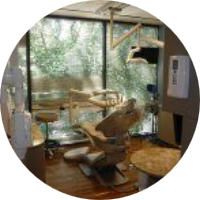 Losing a tooth is not such a big deal nowadays because of various teeth replacement procedures to restore your smile. If you lost a tooth in between two healthy teeth for instance, you could use a dental bridge to replace the lost tooth. Dental bridges “bridge” the gap as the prosthetic tooth is attached to the two adjacent teeth. The process is simple, skillfully performed by many dentists in Atlanta, GA and around the world. If you’ve lost a tooth, don’t worry as you can always bridge the gap and smile with a complete set of teeth.
Losing a tooth is not such a big deal nowadays because of various teeth replacement procedures to restore your smile. If you lost a tooth in between two healthy teeth for instance, you could use a dental bridge to replace the lost tooth. Dental bridges “bridge” the gap as the prosthetic tooth is attached to the two adjacent teeth. The process is simple, skillfully performed by many dentists in Atlanta, GA and around the world. If you’ve lost a tooth, don’t worry as you can always bridge the gap and smile with a complete set of teeth.
3 Types of Dental Bridges
• Conventional Bridges – These bridges are attached to two adjacent teeth that have been reshaped and restored with dental crowns. The adjacent teeth are prepared by sculpting and reducing their size to make way for the false tooth. The crowns and the bridge are then bonded together to form one unit, which is then affixed to the adjacent teeth. This type of dental bridge is perfect for people with tooth fillings because the fillings serve as a good foundation for the placement of dental crowns. Conventional bridges are also best performed for the replacement of molars.
• Cantilever Bridges – If you’ve lost a front tooth, a cantilever bridge can be a good option to fill in the gap. This type of bridge doesn’t need 2 adjacent teeth, but requires only 1 adjacent tooth where the bridge will be bonded. Cantilever bridges are specially designed to adhere to only one tooth.
• Resin-bonded Bridges – These bridges may be an option if the adjacent teeth of a missing tooth are healthy and well-maintained. They are also popularly used for the front teeth as they don’t work well for teeth used in chewing food. For the bonding process, the false tooth adheres with resin cement and attaches with metal rings or bands. Resin-bonded bridges require less tooth preparation; hence, it is a widely preferred option by many patients.
How to Care and Maintain your Smile with Dental Bridges
Daily brushing and flossing tops the list of caring for your dental bridges. Bridges, just like real teeth must be cleaned, so they are able to provide you with many years of function. You are advised to brush your teeth after eating, and to floss before sleeping. Brushing must also be done thoroughly and must last for at least two minutes. That means one minute of brushing for the upper teeth and another minute for your lower teeth.
Visit your dentist every six months for regular dental check-ups. This reduces the chance of losing another tooth, as well as ensures that your bridges are maintained well.
Follow the detailed instructions given by your dentist on how to care for your dental bridges properly.
No More Gaps with Dental Bridges
Spaces or gaps between two teeth affect the beauty of your smile and your professional image. Teeth also have the tendency to move when a space is left unfilled for long. Thus, it is important to replace a lost tooth as soon as possible. Consult with a reputable and trusted dentist and see if dental bridges are a good option for you. No more gaps between teeth mean a beautiful, healthy smile.
Image Courtesy Pinterest




